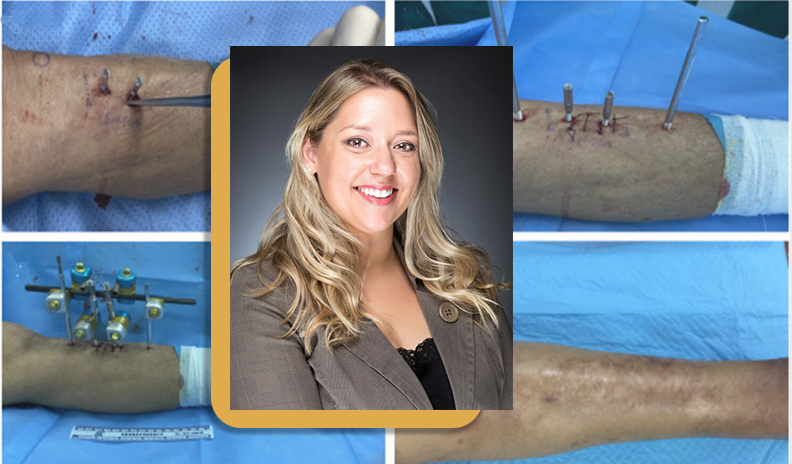Adrienne Estes, DPM, MS, FACFAS, DABPM, PAFWHc, is participating in projects sponsored by Orthofix-SeaSpine, a leading global spine and orthopedics company.
This December, Dr. Estes will travel to Verona, Italy to discuss medical advancement education as part of a group of 10 international surgeons of which Dr. Estes will be one of two women attending, and one of two Americans. The goal of this meeting is to modernize medical education with a focus on high impact presentations of successful techniques to inspire a live and online audience. The structure, content, and delivery of medical education continues to be fine-tuned as medicine improves, federal policies impact health care, learning and teaching are being better understood, and educators strive to ensure an easier transition between first year to 4th year in medical school. One of the contents of medical education that’s continually being revised is delivery system changes and Dr. Estes’ participation in Verona will assist in bringing ideas for best practices back to WesternU CPM.
Separately, Dr. Estes will be engaged in an innovative project to explore new means of limb preservation by evaluating osseous neovascularization. This technique that Dr. Estes will be exploring, the transverse tibial bone transport, has been performed and explored in countries such as China, Italy and Russia, showing results that it works. However, this particular surgery is not currently being explored in America nor is it being incorporated as an option to salvage a limb.
“By growing bone with traction, a new generation of blood vessels is created and can potentially aid in regenerating tissue,” explains Dr. Estes. “By applying this concept with feet/legs with poor blood flow, it may improve wound healing, increase blood flow and save limbs.”
The select group of surgeons invited to participate in bringing this type of surgery to America will perform the surgery described by international studies and evaluate the data and outcomes over time. Specifically, Dr. Estes and the team will be looking to determine:
1) Were similar findings noted compared to international colleagues?
2) Did the wounds heal?
3) Did blood flow improve to the foot long term to avoid recurrence of wounds/gangrene?
4) Was major amputation to diabetic patients avoided?
Dr. Estes contributions and participation in this unique project provides an opportunity to bring this innovation to our country and potentially help countless patients. For more information, contact Dr. Estes at estesa@westernu.edu
Image source: https://www.sciencedirect.com/science/article/pii/S2214031X20301133#fig2


